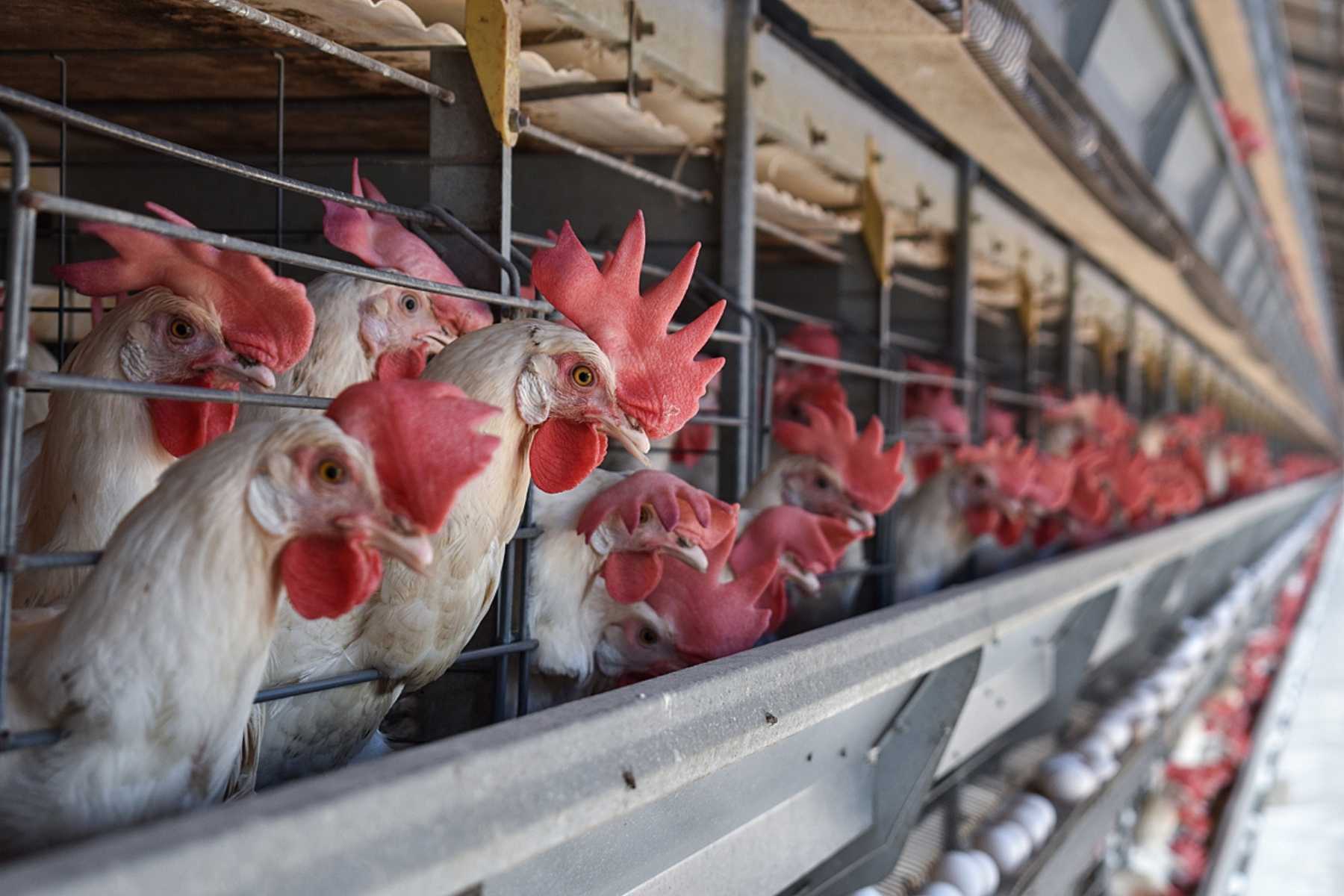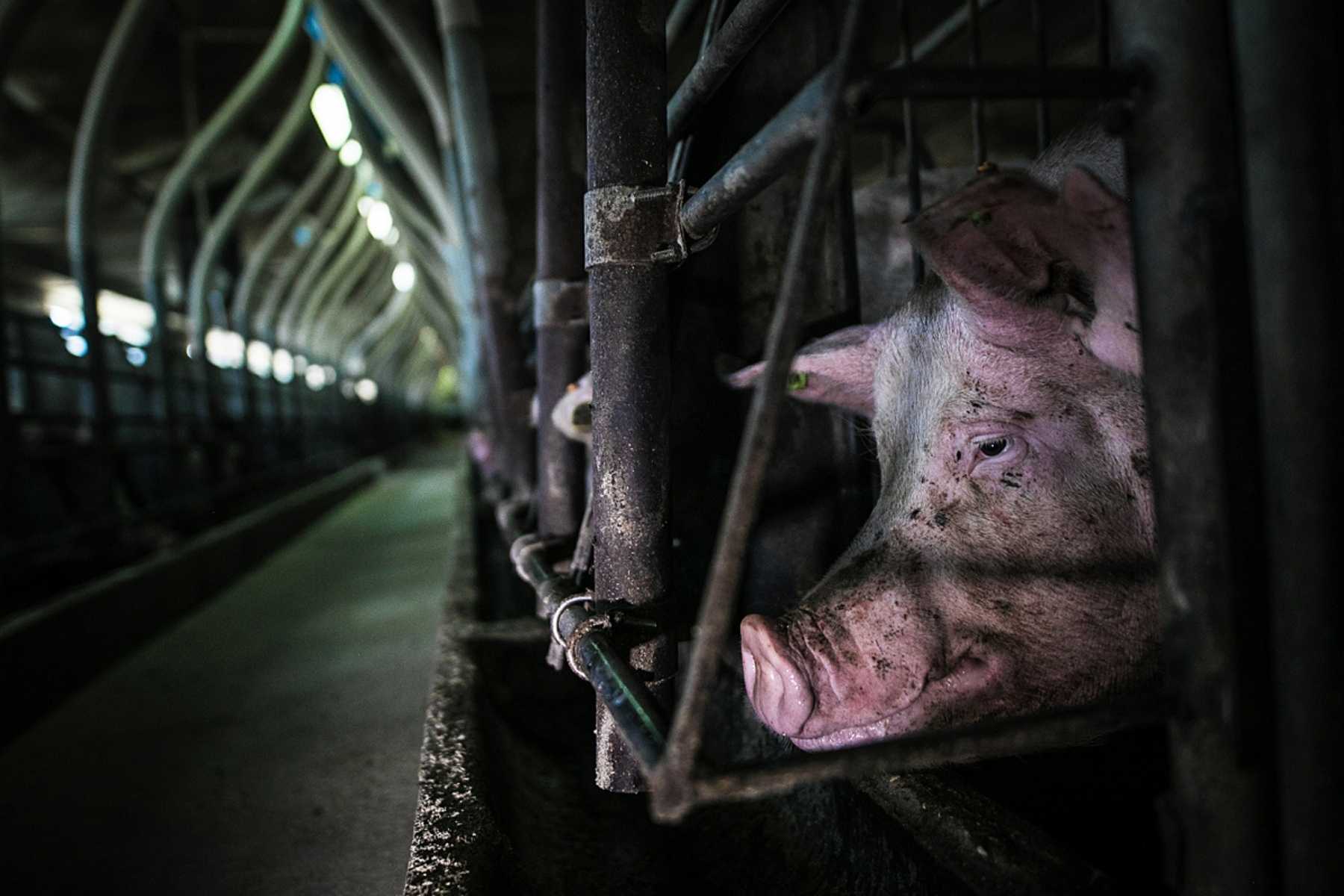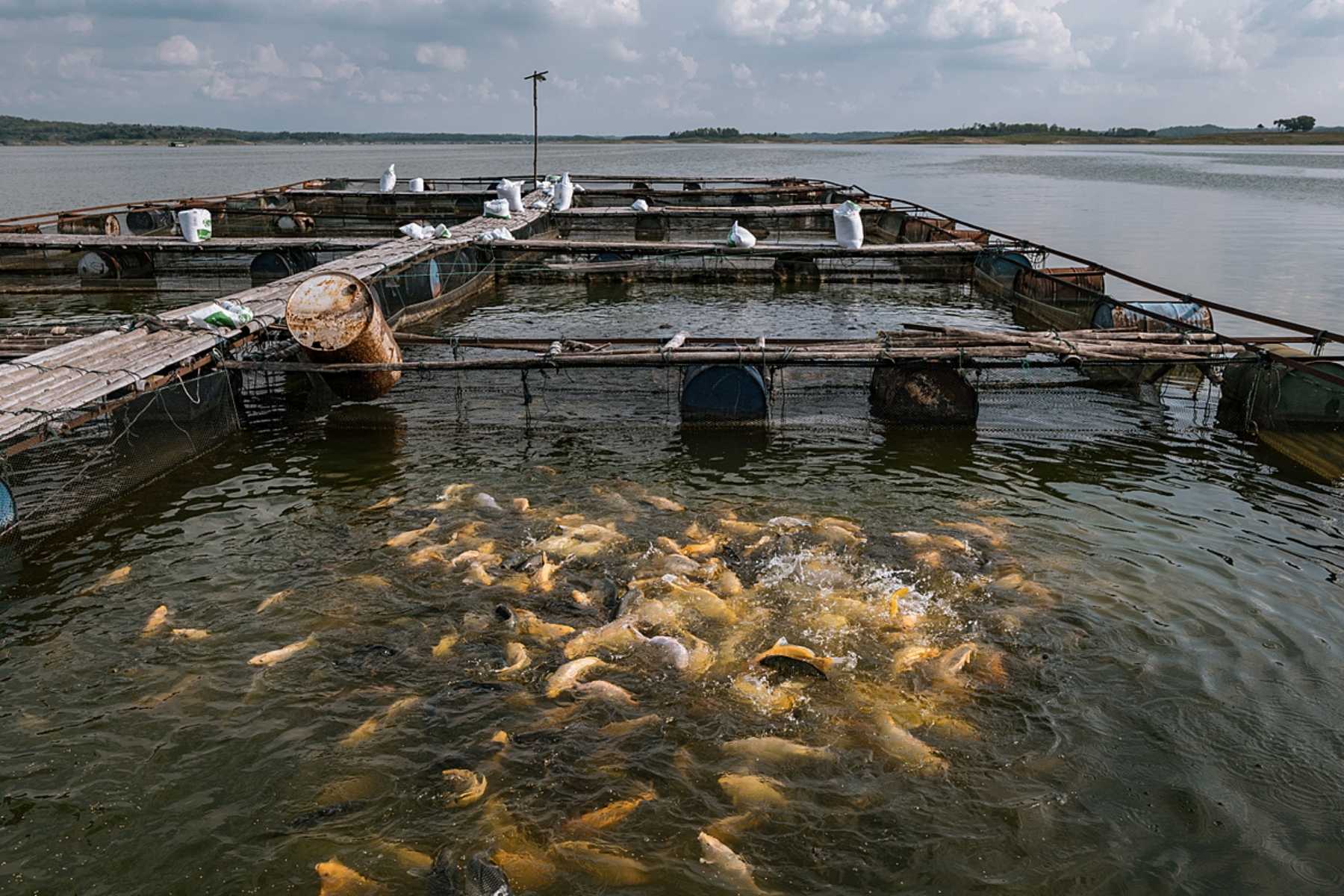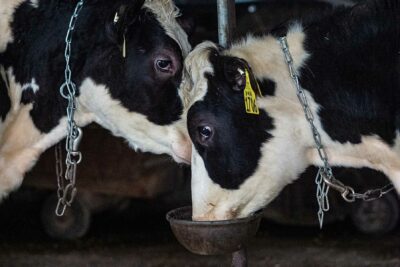We may have heard the term ‘factory farming’ without realizing how common it is, how many animals suffer as a result, and what it means for our planet and for us. Here we take a look at how factory farming began, and why it is absolutely imperative it ends soon.
What Is Factory Farming?
Factory farming is where the concept of mass producing factory components is applied to living beings. It is also known as ‘intensive farming’, and it is utterly inhumane. Cows, chickens, and pigs are not cans of beans or steel ball bearings, they are sentient animals who can feel pain, experience a wide range of emotions, and have their own desires, needs, and preferences. In the factory farming system, they are treated as if none of those things matter, with profit driving every decision made and every practice adopted.
When Did Factory Farming Start?
It began in the 1920s, when farmers started to realize they could increase egg production by rearing thousands of birds inside one large shed instead of allowing a smaller number of birds to roam freely in farmyards and pastures.
In Britain, farming started to intensify after the second world war, as food security was prioritized after many years of rationing. The government offered subsidies to farmers to generate ever greater output, and that is a trend that has continued to this day, in the UK and elsewhere, despite the many problems—environmental, health, and ethical—it has caused.
Who Started Factory Farming?
That’s a good question but one that cannot easily be answered. It is the culmination of an ideology that seeks to control and subjugate animals and the natural world, in order to pursue wealth, status, and power. Such forces go back centuries.
Did it begin when humans first started to settle and to purposefully breed animals to have specific traits? Did it begin when farmers first saw they could increase productivity by confining many more animals inside barns and cages? Or when governments passed laws that used taxpayers’ money to prop up these systems of mass production, thereby taking intensive farming from niche to mainstream?

When Did Factory Farming Become Popular?
It became popular through the mid and late 20th century, and it is still expanding across much of the world today.
Factory farming was initially so popular because the farming world got wealthier, and the public were able to access cheap meat, milk, and eggs. It may have seemed like great news for everyone, except the animals themselves, of course. But then we learned more about the forests being cut down so crops could be grown to feed these animals, the people who lived near to farms getting sick, the oceans and rivers being polluted, the climate heating up, people getting sick from eating so many animal products, the spread of new pandemics, and the growth of antibiotic resistance … and suddenly factory farming seems like the worst idea that anyone has ever had.
Where Is Factory Farming Most Common?
In the global north, most animals exploited for their meat, milk, eggs, or reproductive potential are kept in factory farms. This intensive industrial system is also expanding fast in other parts of the world. Sadly, all the appalling side-effects of factory farming are now being felt in these other territories, too.
History of Factory Farming Timeline
- 16th century – colonists in the Americas introduced domesticated animals; this kind of farming required larger tracts of land, which were stolen from Indigenous peoples
- 18th century – the British Agricultural Revolution saw a significant increase in farming outputs, including the selective breeding of animals for productive traits
- 19th century – the Industrial Revolution created new technologies that allowed animal farming to intensify
- 1920s – farmers started to incarcerate chickens in order to make egg production more efficient
- 1940s – after the second world war, factory farming took off in the UK as increased production was rewarded with subsidies
- 1940s – antibiotic use allowed farmers to keep more animals crammed together
- 1970s – pig farms in the United States really started to intensify
- 1980s – the vast majority of farmed animals are now incarcerated, and they are pushed to—and way beyond—their biological limits
- Present – 99 percent of animals in America are now imprisoned in factory farms, that’s about 1.6 billion sentient beings.

What Are the Conditions Like for the Animals on a Factory Farm?
Life for animals trapped inside the intensive farming system is filled with discomfort, misery, pain, fear, and frustration. They are denied natural behaviors, and are given the bare minimum to keep them alive just long enough so that they can be slaughtered for profit. They are trapped in cages or filthy pens or barns. They lack fresh air, and there is no room to roam, graze, wing flap, nest, roost, or fly. Conditions for animals confined within this system are indefensible.
Cruel Confinement
Billions of animals are confined in cages or crates so small they can barely move. Pigs, chickens, turkeys, and calves are most routinely confined in this way, but fish are also victims of cruel confinement within the factory farming system. Animals are crammed in together, no matter the stress, distress and physical suffering it causes them.
Inhumane Treatment
In today’s world of mass production, animals are treated as no more than a series of money-making body parts. Females are repeatedly inseminated, and their babies, milk, and eggs are stolen from them. Animals are beaten, mutilated, and abandoned to suffer and die. Those who survive this ruthless system are slaughtered.
Chickens Are Debeaked
One of the many mutilations carried out legally on factory farms is debeaking. Conditions on farms are so crowded that the birds cannot move without colliding with other animals; they cannot stretch their wings or take more than a pace or two for their whole lives.
Unsurprisingly, the birds take out their frustrations on one another, just as we might if we were locked inside a tiny booth with ten other people forever. Instead of recognizing the great harm they are doing to the birds, and improving their lives, farmers cut off the ends of their beaks with a red-hot blade. This way, when the birds peck at each other in frustration, they cause less damage, and no profits are lost. Of course, this mutilation hurts. It can cause severe pain for the rest of their lives. But what do individuals matter to a system that focuses only on productivity and profits?
Forced Molting
This is a misnomer; this process is more accurately named ‘deliberate starvation’. It is the common practice in the United States of withholding all food from egg-laying hens for up to three weeks at a time. Farmers found that when the birds are finally permitted to eat again, the eggs they produce are larger and therefore more profitable.
During those agonizing weeks, the birds lose weight and their feathers fall out. They are so hungry they will eat anything at all, including those lost feathers. Imagine being deliberately starved for three weeks just so someone could make a few cents more from your body.
Genetic Manipulation
Money-making traits are bred into animals, even when it comes at a huge expense to the individuals themselves. Chickens farmed for their meat have been bred by the industry to put on so much weight so fast that their hearts and bones commonly give out. Their deaths are factored into the profit-and-loss sheet, and so long as the money keeps coming in, the millions of casualties matter little to the industry.
Cows too have been bred to produce so much more milk than their calves could ever drink, and this means their udders may become painfully swollen, and more susceptible to infections such as mastitis. This infection is one reason why so many cows are slaughtered at such a young age.

Unhealthy Levels Of Ammonia
The waste produced by animals contains ammonia. In small doses it is not harmful, but when billions of animals are crammed into warehouses, the amount of waste produced is gargantuan… and so are its impacts. The ammonia in the litter can cause burns on the animals’ feet and chests, as well as conjunctivitis and respiratory problems. It can affect the health of farm workers, and even the people who live nearby who may suffer impaired lung function as a result.
Ammonia is also a serious and widespread environmental pollutant, which damages sensitive ecosystems, including waterways and ecologically important plant species. Animal farming is the primary cause of ammonia pollution.
Why Is Factory Farming Bad?
It is a system that is bad for people, animals, and our planet, and its demise cannot come soon enough.
Animal Welfare
There is no doubt that animals endure appalling suffering inside factory farms. Mass incarceration, mutilation, and forced impregnation is only the start.
Chickens commonly suffer heart failure and broken bones, but are not afforded veterinary care, as that would cost more than their lives are worth to the farmer. Cows reared so we can take their milk suffer lameness and mastitis, while pigs suffer lesions, prolapses, and pressure sores from being forced to give birth on concrete floors. The appalling suffering inflicted on farmed animals is seemingly endless, and that is before we factor in the deliberate beatings meted out by frustrated farm workers, caught all too frequently on hidden cameras.
The emotional stresses and strains on the animals are also huge. Babies are stolen from their mothers, and animals are unable to behave as their every instinct urges them to. They cannot dust bathe, root in the earth, spread their wings out in the sun, nest, have privacy when they give birth, roost, roam freely, or fly. Everything that makes their lives worth living is denied them.
Environmental Impact
Factory farming is driving the climate crisis, the biodiversity crisis, and the pollution crisis.
It uses too much land, water, and energy, and it gives too little back in terms of calories. No wonder Oxford University researchers say that the “single biggest way” we can help the environment is to ditch meat and eat a vegan diet.
Human Health Issues
When we make animal products a part of our diet, we raise our risk of developing chronic conditions like heart disease, type 2 diabetes, and some cancers. Conversely, a whole food vegan diet reduces the risks of chronic disease, and helps improve digestion, energy levels, mood, sleep, and mental health.
Is Factory Farming Illegal?
No, but it should be.
Why Does Factory Farming Still Exist?
It exists because the industry has created a demand for, and an expectation of, cheap animal products, and then it profits handsomely on the back of that demand. The cycle of suffering and harm caused by intensive animal agriculture will end only when we stop buying animal products and instead choose healthy, wholesome plant-based foods. Unlike meat, milk, and eggs, these products do not cost the Earth, cause suffering to billions of animals, and risk our own futures.
Factory Farming Facts and Statistics
- Ninety-nine percent of chickens in the US are factory farmed
- Ninety-four percent of chickens in the UK are factory farmed
- 50 billion animals are factory farmed every year
- Factory farming drives deforestation
- Factory farming drives climate breakdown
- Factory farming is responsible for water pollution
- Factory farms are breeding grounds for disease
- Factory farming is bad news for animals, the Earth, and for us

Solutions to Factory Farming
While people keep buying the products of factory farming, farmers will continue to farm animals inhumanely. It’s clear what we now must do.
Reduce Meat, Egg, and Dairy Consumption
We need to cut down on, or better still cut out altogether, meat, milk, and eggs from animals. This does not mean we have to miss out on the foods we love. There are vegan versions of just about every food, so we can get the flavors, tastes, and textures we enjoy and continue to eat the foods that are meaningful or traditional.
Keep Learning
Watch one of the many excellent documentaries about animal farming, and share these with family and friends. We recommend Cowspiracy, Land of Hope and Glory, Dominion, Eating Animals, and Eating our Way to Extinction. When we know the true impact of our food choices, our motivation to change only strengthens.
Volunteer and Donate
Being vegan is a wonderful contribution to the protection of our animal friends and our planet, but if you want to do more, you can volunteer with campaigning organizations or sanctuaries, or donate if you can afford to.
Conclusion
The sooner we end factory farming, the sooner we will halt the atrocities it causes and the damage it does. Its demise cannot come soon enough for the billions of animals trapped inside the system. Nor can it come soon enough for our planet, and all those who live on it.
If you are thinking about trying a vegan diet, we can help you. Sign up for our free 31-day vegan challenge, and we’ll send you daily emails with tips, tricks, motivations, and recipes to guide you on your plant-based journey



